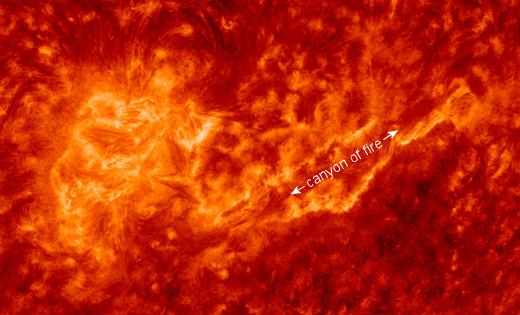
Βρίσκονται σε λίμνες και ποτάμια σε όλο τον κόσμο, μονοκύτταρα πλάσματα σαν αυτά Paramecium bursaria Μπορεί και να φάει και να φωτοσυνθέσει. Μικρόβια όπως αυτά παίζουν διπλό ρόλο στην κλιματική αλλαγή, απελευθερώνοντας ή απορροφώντας διοξείδιο του άνθρακα – το αέριο θερμοκηπίου που παγιδεύει τη θερμότητα που είναι ο κύριος μοχλός της θέρμανσης – ανάλογα με το αν υιοθετούν έναν τρόπο ζωής που μοιάζει με ζώα ή φυτά. Πιστώσεις: Daniel J. Wieczynski, Πανεπιστήμιο Duke
Η αύξηση των επιπέδων θερμότητας θα μπορούσε να ωθήσει το πλαγκτόν των ωκεανών και άλλους μονοκύτταρους οργανισμούς προς το κατώφλι του άνθρακα, γεγονός που θα μπορούσε να επιδεινώσει την υπερθέρμανση του πλανήτη. Ωστόσο, πρόσφατες μελέτες υποδηλώνουν ότι μπορεί να είναι δυνατό να εντοπιστούν πρώιμα προειδοποιητικά σημάδια πριν αυτοί οι οργανισμοί φτάσουν σε αυτό το κρίσιμο σημείο.
Μια ομάδα επιστημόνων που διεξάγει έρευνα σε μια ευρέως διαδεδομένη, αλλά συχνά παραβλέπεται, κατηγορία μικροβίων ανακάλυψε έναν βρόχο ανάδρασης του κλίματος που μπορεί να αυξήσει την υπερθέρμανση του πλανήτη. Ωστόσο, αυτό το εύρημα έρχεται με ένα θετικό: Μπορεί επίσης να είναι ένα σήμα έγκαιρης προειδοποίησης.
Χρησιμοποιώντας προσομοιώσεις υπολογιστή, ερευνητές από το Πανεπιστήμιο Duke και το Πανεπιστήμιο της Καλιφόρνια, Σάντα Μπάρμπαρα, έδειξαν ότι η συντριπτική πλειονότητα του παγκόσμιου ωκεάνιου πλαγκτόν, μαζί με πολλούς μονοκύτταρους οργανισμούς που κατοικούν σε λίμνες, τυρφώνες και άλλα οικοσυστήματα, μπορεί να φτάσουν σε ανατροπή. σημείο. Εδώ, αντί να απορροφούν διοξείδιο του άνθρακα, αρχίζουν να κάνουν το αντίθετο. Αυτή η αλλαγή είναι αποτέλεσμα του τρόπου με τον οποίο ο μεταβολισμός σας ανταποκρίνεται στη θέρμανση.
Επειδή το διοξείδιο του άνθρακα είναι ένα αέριο του θερμοκηπίου, αυτό με τη σειρά του μπορεί να ανεβάσει τις θερμοκρασίες – ένας βρόχος θετικής ανάδρασης που μπορεί να οδηγήσει σε ταχεία αλλαγή, όπου μικρές ποσότητες θέρμανσης έχουν μεγάλο αντίκτυπο.
Αλλά παρακολουθώντας προσεκτικά την αφθονία τους, μπορεί να είμαστε σε θέση να προβλέψουμε το σημείο καμπής πριν φτάσει εδώ, αναφέρουν οι ερευνητές σε μια μελέτη που δημοσιεύθηκε την 1η Ιουνίου στο περιοδικό Nature. λειτουργική οικολογία.
Στη νέα μελέτη, οι ερευνητές εστίασαν σε μια ομάδα μικροοργανισμών που ονομάζονται mixotrophs, που ονομάζονται έτσι επειδή αναμειγνύουν δύο τρόπους μεταβολισμού: Μπορούν να φωτοσυνθέσουν όπως ένα φυτό ή να κυνηγήσουν τροφή όπως ένα ζώο, ανάλογα με τις συνθήκες.
«Είναι σαν[{” attribute=””>Venus fly traps of the microbial world,” said first author Daniel Wieczynski, a postdoctoral associate at Duke.
During photosynthesis, they soak up carbon dioxide, a heat-trapping greenhouse gas. And when they eat, they release carbon dioxide. These versatile organisms aren’t considered in most models of global warming, yet they play an important role in regulating climate, said senior author Jean P. Gibert of Duke.
Most of the plankton in the ocean — things like diatoms, dinoflagellates — are mixotrophs. They’re also common in lakes, peatlands, in damp soils, and beneath fallen leaves.
“If you were to go to the nearest pond or lake and scoop a cup of water and put it under a microscope, you’d likely find thousands or even millions of mixotrophic microbes swimming around,” Wieczynski said.
“Because mixotrophs can both capture and emit carbon dioxide, they’re like ‘switches’ that could either help reduce climate change or make it worse,” said co-author Holly Moeller, an assistant professor at the University of California, Santa Barbara.
To understand how these impacts might scale up, the researchers developed a mathematical model to predict how mixotrophs might shift between different modes of metabolism as the climate continues to warm.
The researchers ran their models using a 4-degree span of temperatures, from 19 to 23 degrees Celsius (66-73 degrees Fahrenheit). Global temperatures are likely to surge 1.5 degrees Celsius above pre-industrial levels within the next five years, and are on pace to breach 2 to 4 degrees before the end of this century.
The analysis showed that the warmer it gets, the more mixotrophs rely on eating food rather than making their own via photosynthesis. As they do, they shift the balance between carbon in and carbon out.
The models suggest that, eventually, we could see these microbes reach a tipping point — a threshold beyond which they suddenly flip from carbon sink to carbon source, having a net warming effect instead of a cooling one.
This tipping point is hard to undo. Once they cross that threshold, it would take significant cooling — more than one degree Celsius — to restore their cooling effects, the findings suggest.
But it’s not all bad news, the researchers said. Their results also suggest that it may be possible to spot these shifts in advance, if we watch out for changes in mixotroph abundance over time.
“Right before a tipping point, their abundances suddenly start to fluctuate wildly,” Wieczynski said. “If you went out in nature and you saw a sudden change from relatively steady abundances to rapid fluctuations, you would know it’s coming.”
Whether the early warning signal is detectable, however, may depend on another key factor revealed by the study: nutrient pollution.
Discharges from wastewater treatment facilities and runoff from farms and lawns laced with chemical fertilizers and animal waste can send nutrients like nitrate and phosphate into lakes and streams and coastal waters.
When Wieczynski and his colleagues included higher amounts of such nutrients in their models, they found that the range of temperatures over which the telltale fluctuations occur starts to shrink until eventually the signal disappears and the tipping point arrives with no apparent warning.
The predictions of the model still need to be verified with real-world observations, but they “highlight the value of investing in early detection,” Moeller said.
“Tipping points can be short-lived, and thus hard to catch,” Gibert said. “This paper provides us with a search image, something to look out for, and makes those tipping points — as fleeting as they may be — more likely to be found.”
Reference: “Mixotrophic microbes create carbon tipping points under warming” by Daniel J. Wieczynski, Holly V. Moeller and Jean P. Gibert, 31 May 2023, Functional Ecology.
DOI: 10.1111/1365-2435.14350
The study was funded by the Simons Foundation, the National Science Foundation, and the U.S. Department of Energy.

“Ερασιτέχνης διοργανωτής. Εξαιρετικά ταπεινός web maven. Ειδικός κοινωνικών μέσων Wannabe. Δημιουργός. Thinker.”



